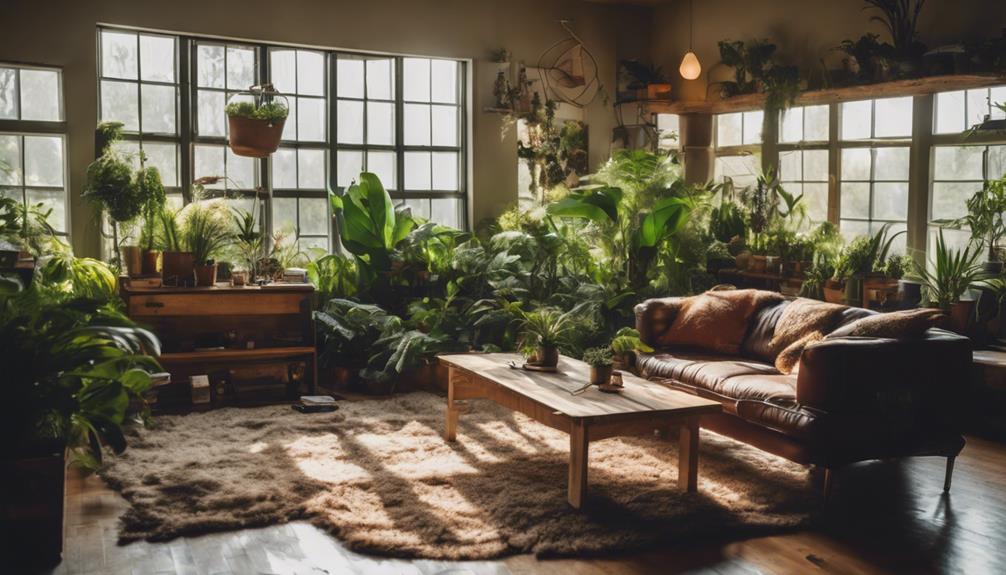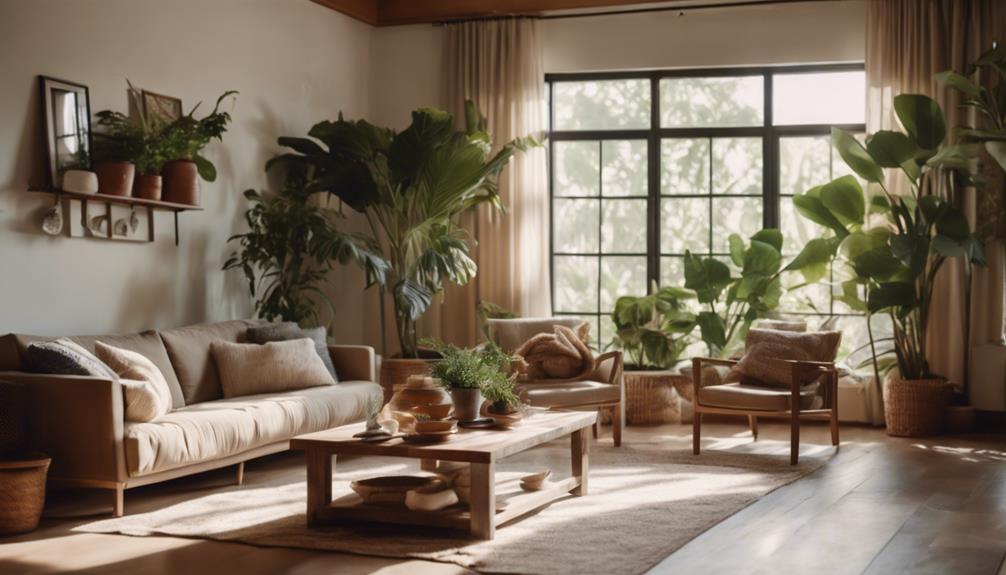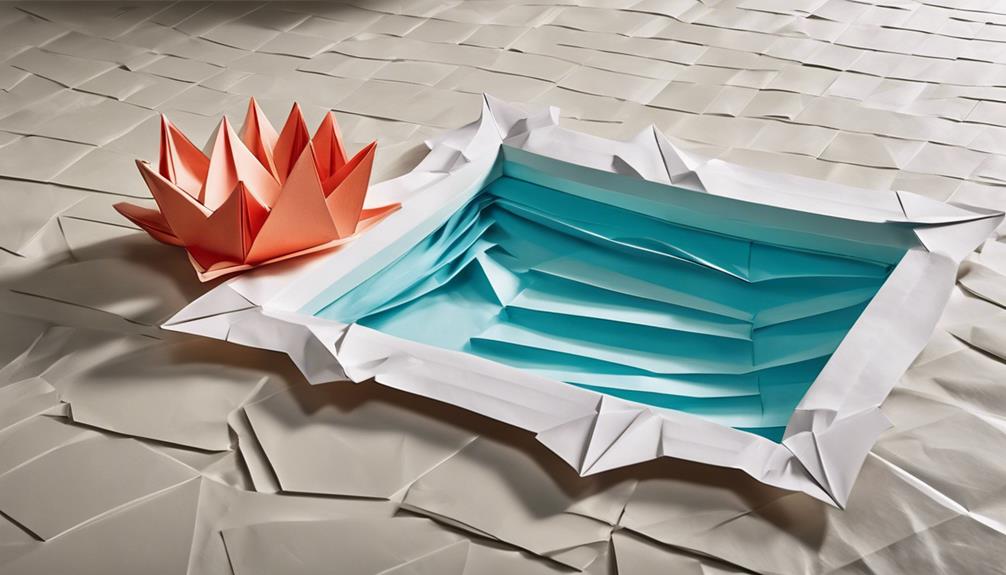Incorporating natural elements into your home decor can truly transform your space into a stunning sanctuary. You'll find that plants, wood, and stone not only boost your mood but also improve air quality and reduce stress. Using odd-numbered groupings of plants creates a balanced look, while nature-inspired colors add tranquility. Consider swapping carpets for hardwood floors and incorporating sliding doors to connect your indoor and outdoor environments. This eco-friendly approach fosters a deeper connection to nature, enhancing your overall well-being. Keep exploring options, and you'll discover even more incredible ideas to elevate your decor!
Key Takeaways
- Use a variety of plants to enhance textures and improve indoor air quality, creating a vibrant atmosphere.
- Incorporate natural materials like wood and stone for organic aesthetics that reduce stress and promote well-being.
- Maximize natural light through large windows or sliding doors, fostering a connection between indoor and outdoor spaces.
- Choose nature-inspired colors for walls and decor to evoke a calming and tranquil environment.
Understanding Biophilic Design
Biophilic design taps into your natural desire to connect with the outdoors, creating spaces that boost your mood and well-being. This design philosophy emphasizes incorporating natural elements, such as plants, water features, and natural materials like wood and stone. By integrating these features, you can enhance your home's aesthetic appeal while promoting a calming atmosphere.
One of the key aspects of biophilic design is maximizing natural light, which can greatly impact your mental health. Sunlight not only brightens your space but also improves your overall air quality by reducing indoor toxins. When you surround yourself with natural elements, you're fostering an environment that invites relaxation and rejuvenation.
Research shows that spending just two hours outdoors each week can dramatically lower stress and anxiety levels. As a result, by embracing biophilic design, you're not only beautifying your home but also prioritizing your mental health.
The resurgence of this design approach reflects a growing awareness of the importance of well-being in our living spaces, especially during times of isolation. By understanding and implementing biophilic design, you create an inviting sanctuary that resonates with your innate connection to nature.
Benefits of Natural Elements

Incorporating natural elements into your home decor offers numerous health benefits, from reducing stress to improving air quality. By embracing these natural components, you not only enhance your living space but also promote a healthier lifestyle.
Here are four key benefits:
- Reduced Stress: Surrounding yourself with organic textures like wood and stone can lower anxiety levels and foster a sense of tranquility in your environment.
- Improved Indoor Air Quality: Natural materials absorb toxins and release oxygen, leading to fresher air and healthier indoor environments.
- Boosted Mental Health: Including plants in your decor not only beautifies your space but also enhances cognitive function and promotes relaxation, benefiting your overall mental health.
- Eco-Friendly Living: Using eco-friendly materials contributes to sustainability, reducing your carbon footprint and creating a positive impact on the environment.
Practical Incorporation Techniques

Transform your space by seamlessly blending plants and natural materials into your decor for a revitalizing, organic aesthetic. Start by incorporating odd-numbered groupings of greenery to create a visually appealing balance in your home decor. Use a variety of plants, such as ferns, succulents, and grasses, to introduce diverse textures that enhance the natural feel of your environment.
Small potted plants are perfect for filling empty corners and shelves, adding a rejuvenating touch of nature without overwhelming your design. Remember to reflect on the scale of your plants; larger plants can act as focal points, while smaller ones complement other decorative elements in your home.
To create visually interesting arrangements, group plants with complementary decor items like books or decorative bowls. This not only draws the eye but also integrates the natural elements in your home harmoniously.
Seasonal Redesign Tips

As you embrace the beauty of natural elements in your decor, consider seasonal redesign tips that refresh your space and enhance its connection to the outdoors. By integrating these ideas, you can transform your home design and interior design effortlessly.
- Swap Carpeting for Hardwood Floors: This change not only brings a more natural feel to your space but also simplifies maintenance and enhances aesthetics.
- Paint with Nature-Inspired Colors: Opt for soothing, vibrant colors that evoke the tranquility of nature, creating a peaceful atmosphere in your home.
- Incorporate Sliding Doors: These features seamlessly blend your interior and exterior spaces, inviting fresh air and sunlight to flow through your home.
- Play Soothing Nature Sounds: Enhance relaxation by filling your space with calming sounds, fostering a serene ambiance that resonates with the beauty of the season.
Design Inspiration and Community Engagement

Digital platforms are revolutionizing how you discover design inspiration and engage with a vibrant community of fellow decor enthusiasts. These online spaces make it easy for you to explore a diverse array of ideas, especially when it comes to incorporating nature into your home. You can find countless decorative elements inspired by nature, from earthy color palettes to organic materials.
Participating in seasonal themes and design challenges can spark your creativity and encourage you to share your unique style. With over 7,628,410 designs created on the DecorMatters app, you'll find a wealth of inspiration from others passionate about home decor. By engaging with this community, you not only showcase your talent but also gain fresh perspectives on how to enhance your living spaces.
Regular updates on trending designs and community challenges keep you informed and motivated. This ongoing interaction fosters a sense of belonging and inspires innovative approaches to integrating natural elements into your home.
How Can I Use Natural Elements in my Home Decor to Achieve Jaw-Dropping Results?
Transform your space with natural elements by incorporating items like bamboo flooring, wooden furniture, and stone accents into your home decor. These elements can create a warm and inviting atmosphere, while also adding texture and depth to the overall design. Consider using plants and natural lighting to further enhance the natural ambiance.
Conclusion
By weaving natural elements into your home decor, you're not just enhancing aesthetics; you're inviting a refreshing change into your living space.
Imagine the serene rustle of leaves or the subtle warmth of wood enveloping you. It's like giving your home a gentle hug from nature itself!
So, why not take that leap? Embrace biophilic design and let your surroundings blossom with life, beauty, and a touch of tranquility that's simply irresistible.









